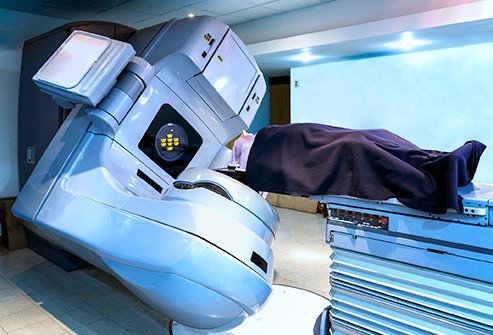What Is the Survival Rate of Non-Small Cell Lung Cancer?

Lung cancer is one of the leading causes of cancer-related mortality in the United States and around the world. There are two main types of lung cancers, namely, small cell lung cancer and non-small cell lung cancer (NSCLC). NSCLC accounts for 85% of all lung cancer cases in the United States. It must be noted that medical science is progressing with leaps and bounds, and treatment for lung cancer must be initiated and maintained despite the stage of diagnosis.
- For people with localized NSCLC, that is, cancer has not spread outside of the lungs, the overall five-year survival rate is 61%.
- For regional NSCLC, that is, cancer has only spread outside of the lungs to adjacent areas, the five-year survival rate is about 35%.
- Based on the latest data, when cancer has spread to distant parts of the body, that is, metastatic lung cancer, the five-year survival rate is 6%.
- The average five-year survival rate for NSCLC is 24%.
The survival rate and treatment options for NSCLC depend on the following:
- The stage of cancer (the size of the tumor and whether it is in the lungs only or has spread to other places in the body)
- The type of lung cancer
- Whether cancer has mutations (changes) in certain genes, such as the epidermal growth factor receptor (EGFR) gene or anaplastic lymphoma kinase (ALK) gene
- Whether there are signs and symptoms such as coughing or trouble breathing
- The patient’s general health
What are the types of non-small cell lung cancer?
There are several types of non-small cell lung cancer (NSCLC). Each type of NSCLC has a different type of cancer cells that grows and spreads in different ways:
- Squamous cell carcinoma or epidermoid carcinoma: Cancer forms in the flat, thin cells forming the inner lining of the lungs.
- Large cell carcinoma: Cancer that arises from several types of large cells in the lungs.
- Adenocarcinoma: Cancer that arises from the cells that produce mucus. They are present in the lining of the alveoli.
- Other rare types of NSCLC: Include carcinoid tumor, pleomorphic tumor, salivary gland carcinoma, and unclassified carcinoma.
What causes non-small cell lung cancer?
Risk factors for lung cancer include the following:
- Smoking is a major risk factor for lung cancer. Smoking cigarettes, pipes, or cigars currently or in the past significantly increases the risk of lung cancer. The earlier the age of onset of smoking and the longer the years of smoking, the higher the risk of lung cancer. When smoking is combined with other risk factors, the risk of lung cancer is further increased.
- Being exposed to passive smoking (second-hand smoke) also significantly increases the risk of lung cancer.
- Exposure to asbestos, arsenic, chromium, beryllium, nickel, soot, or tar in the workplace increases the risk of lung cancer.
- Being exposed to radiation as a result of radiation therapy to the breast or chest in the work place or atomic bomb radiation increases the risk of lung cancer.
- Living where there is high air pollution is a risk factor for lung cancer.
- A family history of lung cancer is a major factor.
- Being infected with the human immunodeficiency virus (HIV) is a risk factor for lung cancer.
- The risk of lung cancer increases with age.
What are the signs and symptoms of non-small cell lung cancer?
In many cases, lung cancer does not cause any signs or symptoms till cancer reaches advanced stages. It may be found incidentally during a routine chest X-ray or an X-ray done for another condition. Hence, if one has risk factors for lung cancer, they are advised to consult a doctor regularly to undergo screening tests to make a diagnosis early, hence increasing the chances of survival. Signs and symptoms that may occur in lung cancer include:
- Chest pain or discomfort
- Cough that worsens
- Difficulty breathing
- Wheezing
- Blood in sputum (mucus coughed up from the lungs)
- Hoarseness of voice
- Loss of appetite
- Loss of weight
- Fatigue
- Difficulty swallowing
- Swelling of the face
- Enlargement of the veins in the neck
Advanced cancer may spread to the brain and cause seizures, paraneoplastic syndrome, and resultant high calcium levels in the blood giving rise to tetany (spasm of the hand).

